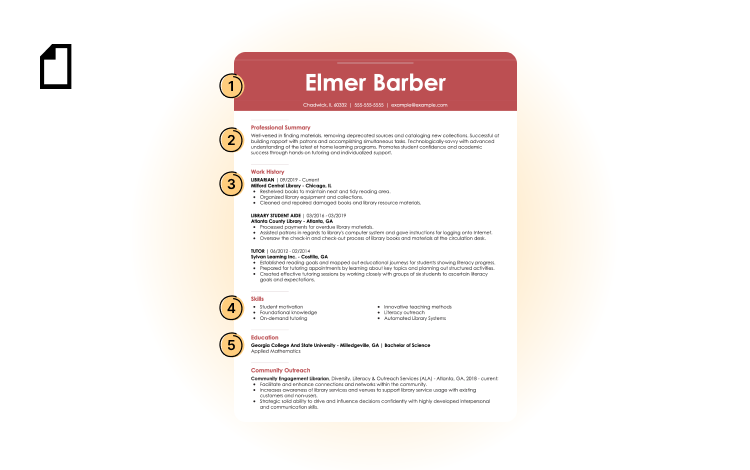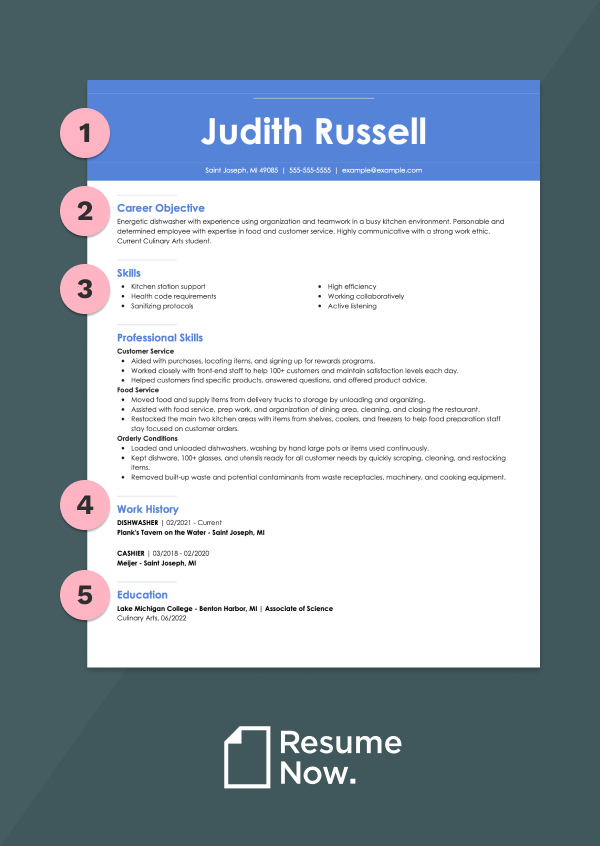Everyone knows that a resume is essential for landing that dream job. A professional resume is among the most important tools in a job seeker’s toolbox. But what is a resume?
In this article, we’ll cover the following:
- The definition and purpose of a resume.
- Different types of resume formats.
- How to structure a resume.
- What to include on a resume.
After reading this guide, you’ll know exactly how to make a resume that works for you!
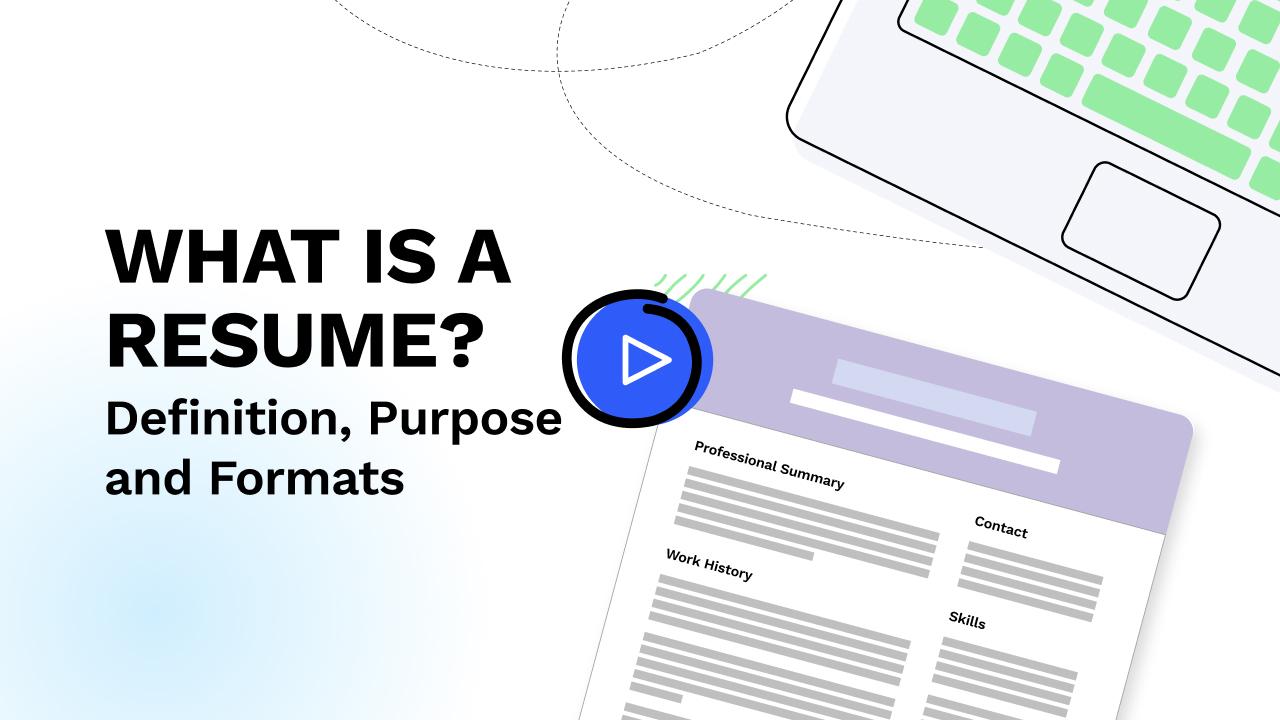
Resume definition and meaning
A resume is a document that job seekers use to describe their professional and educational backgrounds to potential employers. It is a business document that an applicant creates to catalog the skills, experience and education they possess that make them qualified for a position.

How about length? A resume should be brief — two pages maximum.
What is the purpose of a resume?
The purpose of a resume is to communicate your qualifications to potential employers.
A strong resume outlines your accomplishments, skills and experience in a persuasive and easy-to-read manner.
Let’s break this down further. Here are three main purposes of a resume:
- Resumes show employers what you bring to the table. They allow you to highlight your most relevant skills and experiences, showing how you are the ideal candidate for the job.
- Resumes outline your credentials. For many positions, your education and certifications prove you are prepared for the job, especially if you’re in the early stages of your career.
- Resumes grab the attention of recruiters. Recruiters sometimes receive hundreds of applications for a single job opening. A strong and appropriate resume template could be just what you need to stand out from the crowd.
Resume types and formats
While having the right content in your resume is key, there are other factors to consider when learning how to make a resume.
First, there are three types of resume formats: chronological, combination and functional. The one you choose will largely depend on your level of work experience. Each format serves the same purpose, but they emphasize different sections through organization choices.
Let’s discuss how to choose a format that’s right for you.
Chronological resume
Use a chronological resume if:
- You have several years of relevant work experience.
- You can show steady job advancement.
- You intend to emphasize experience.
- Your skills match the job description closely.
Functional resume
Use a functional resume if:
- You have large gaps in your employment history.
- You are changing careers and need to rely on transferable skills.
- You have very little or no work experience.
- You are reentering the workforce after an extended period.
Combination resume
Use a combination resume if:
- You have one to five years of relevant work experience.
- You have sought-after skills you want to emphasize.
- You have a steady work history with no major gaps.
- You want to use a format that gives equal weight to skills and experience.
What to include in your resume
While every resume is different, each one contains the same five basic sections. The order in which these resume sections appear will change depending on the resume format you choose, but you’ll need to learn to compose all of the following sections to write a perfect resume.
Here’s what to put on a resume to get results:
- Header
- Your full name.
- Your email address.
- Your location (city and state).
- Your phone number.
- Links to your LinkedIn, website or portfolio.
- Professional summary
- Three to five sentences about your relevant skills and experience.
- A mention of a noteworthy accomplishment, using data if possible.
- Action verbs that describe your skills and accomplishments.
- Work experience
- A reverse-chronological list of job titles and employers.
- Employment dates for each role.
- Location of each role.
- Three to five bullet points listing achievements and responsibilities.
- Skills
- A list of relevant hard and soft skills.
- Technical skills and computer skills.
- Special training, like CPR.
- Other skill sets, like foreign language proficiency.
- Education
- The name of each school or institution.
- The exact title of your degrees or certifications.
- Awards or recognized accomplishments during your education.
The best way to really grasp the definition of a resume is to take a good look at one. Check out any of our resume examples to help you define “resume,” or explore a AI resume builder to walk through a resume section by section.
What is a resume FAQ
Spelling “resume” without accents is the expected way to spell the word in the U.S. Technically speaking, the accents are correct. In fact, you’ll still see the double accent in publications like the NY Times. But when it comes to everyday usage, the accent-free version has won out.
A resume for a job is essential for most applications, but there are jobs in which a resume isn’t required. Some entry-level positions or gig work, for example, hire without requiring a resume. That said, resume-free applications are rare, and most employers expect a resume to evaluate your qualifications and experience.
If you want to take your application to the next level, consider adding a cover letter. A well-crafted cover letter can provide additional context and highlight your enthusiasm for the position.
A resume should be clean, well-organized and easy to read. It should have a professional appearance, using a simple font and consistent formatting. Key sections to include are your header, professional summary, education, work experience and skills.
Optional sections like certifications, volunteer work and languages can also be included if they add value to your application. The overall design should avoid excessive graphics or colors and ensure it is compatible with the applicant tracking systems (ATS) used by many employers.
The main use of a resume is to apply for jobs and showcase your qualifications to potential employers. However, resumes also serve other purposes. For example, if you are following up with someone you met at a networking event, you may want to email them your resume for future reference.
Was this information about What Is A Resume? Definition, Purpose And Formats helpful? Let us know!
Don is a Certified Professional Resume Writer (CPRW) with more than 10 years’ experience creating digital content, including four years helping job seekers develop their careers. He holds an M.S. in Journalism from Northwestern University.
More resources

Bad Cover Letter Examples: How To Fix Those Annoying Mistakes
Check out four sample cover letters and then learn from a pro...
![Communication Skills for Your Resume [40+ Examples and How to Improve Them] Communication Skills for Your Resume [40+ Examples and How to Improve Them]](/sapp/uploads/2025/08/Communication-skills.png)
Communication Skills for Your Resume [40+ Examples and How to Improve Them]
Good communication skills can propel your personal and profess...

How to List Language Skill Levels on Your Resume
Language skills give you an instant advantage in the job marke...

Virtual Assistant Resume: Examples, Templates and Tips
Build & download your Virtual Assistant resume in a few simple...
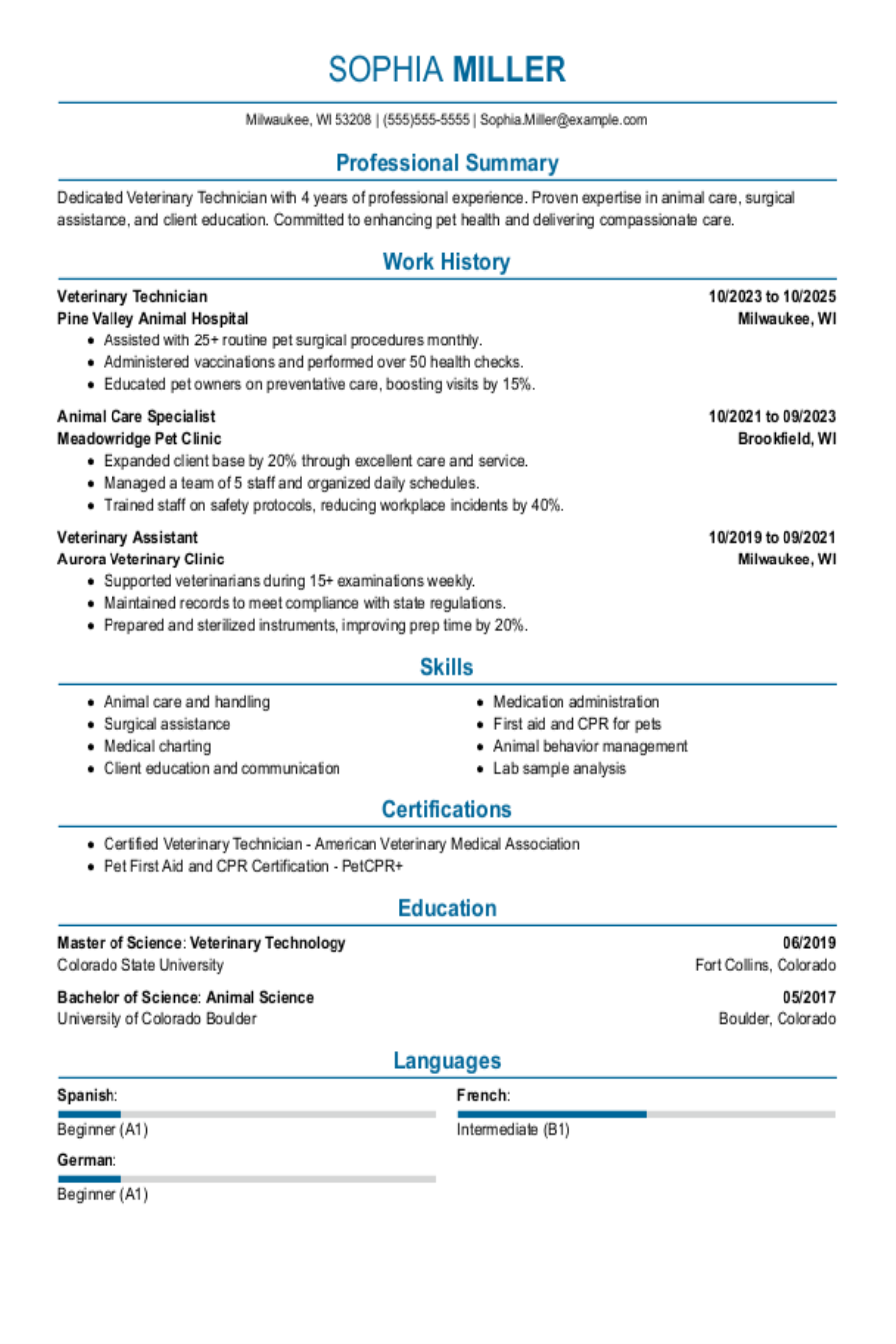
Vet Tech Resume: Examples, Templates & Tips
Get inspired with our vet tech professional resume examples as...
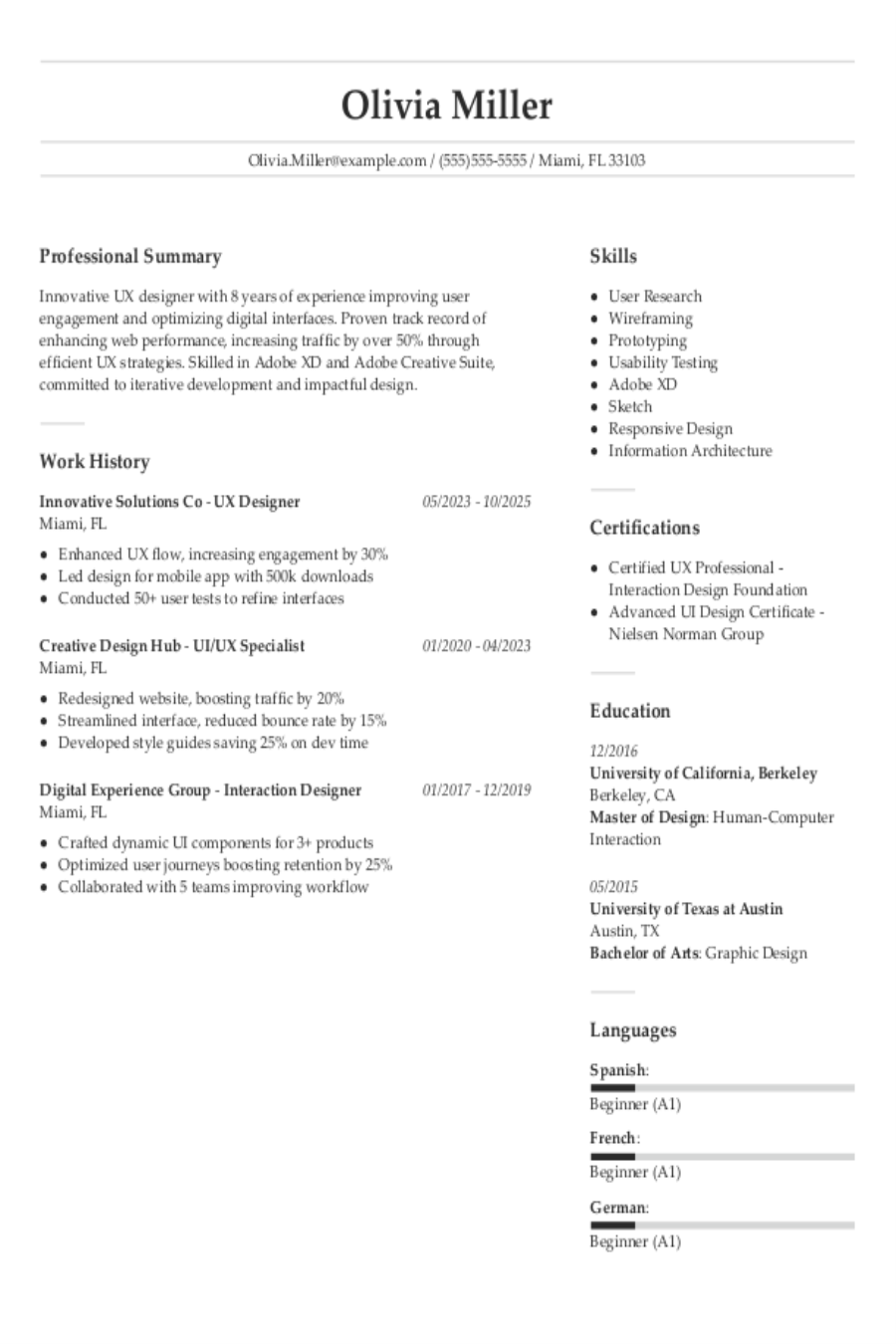
UX Designer Resume: Examples, Templates and Tips
Check out our resume examples for help getting your UX designe...

